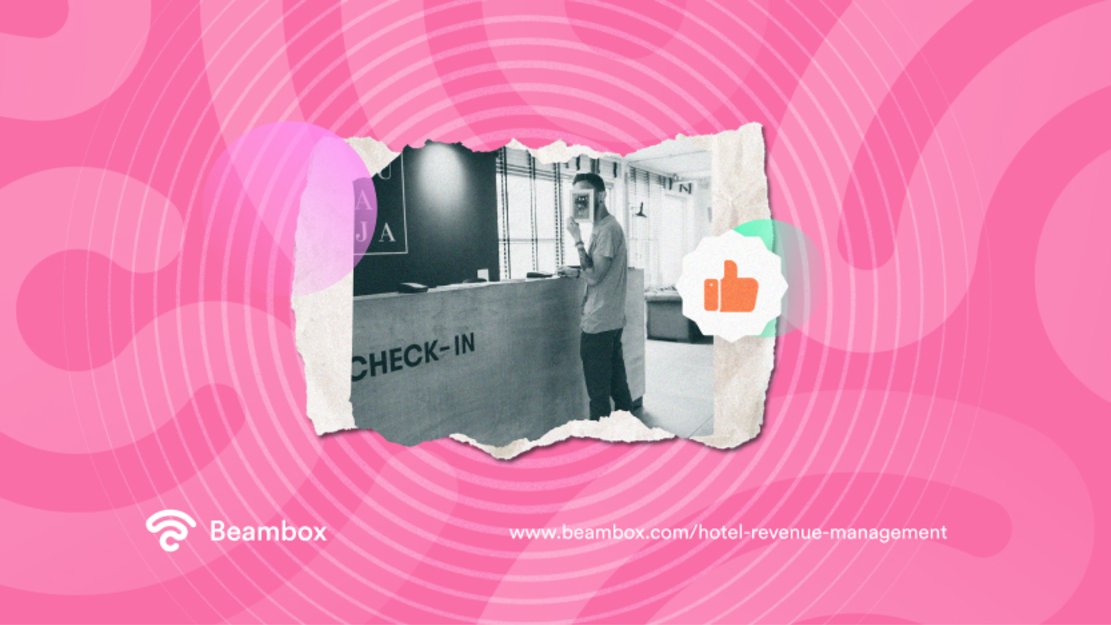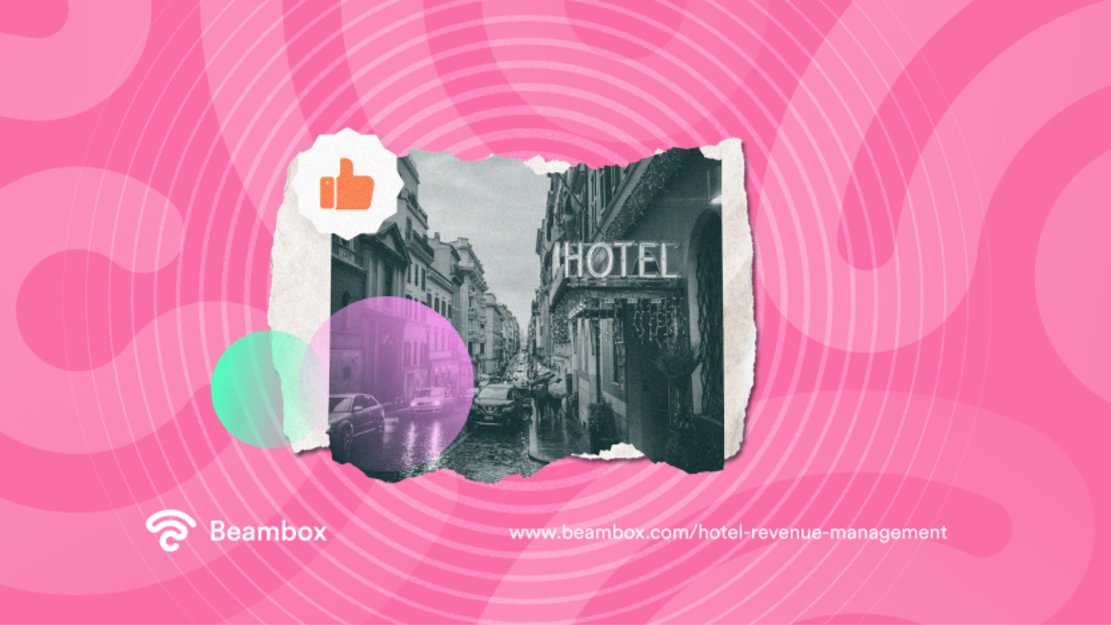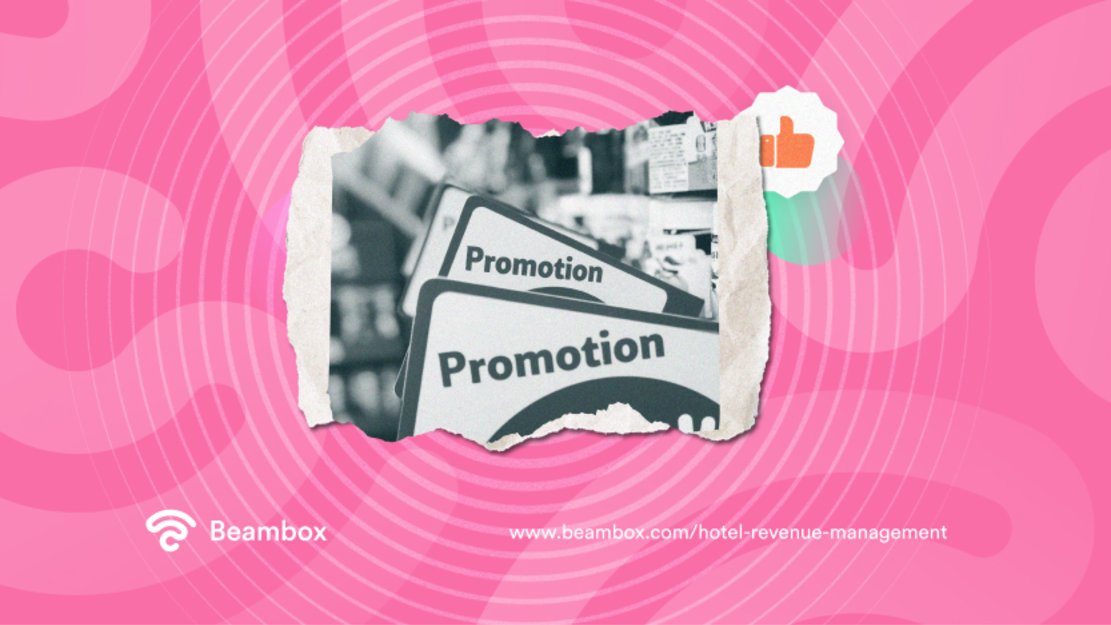It’s common for every business owner to think of ways to increase their revenue. The same goes for hotel owners. They try various trends and techniques but oftentimes ignore one of the easiest and strongest methods: hotel revenue management.
This concept isn’t exactly new. In the late 1970s, airline businesses were the first ones to use it to anticipate customer needs and meet demands.
Once it found success there, it was clear that all industries, regardless of how they operated, needed revenue management. Besides, having a hotel filled to the brim with guests isn’t a guarantee of good revenue.
So, if you’re interested in learning how to manage and increase your hotel’s revenue, you’re in the perfect place.

What Is Revenue Management in Hotels?
The first step in carrying out any business process is to understand what it means. So, let’s start by answering, “What is revenue management in hotels?”
It is the process of using data from customers, performance, and competitors to create strategies that can increase hotel revenue. These strategies might be related to pricing, layout, offerings, etc. Whatever you change, it should result in increased earnings.
However, blindly implementing everything that your competitors are doing and accepting every guest isn’t the right path to take.
Your hotel and its business model are unique and different from others. What works for one hotel might not work for you. And if you implement the same techniques as someone else, you might actually end up hurting your revenue.
So, see your hotel specifics, such as location, market conditions, guest expectations, and growth potential, to create the best strategies.
Moreover, don’t just implement engagement strategies and forget about them. You must monitor your results and make changes accordingly.
Another point to remember here is that revenue management is not the same as yield management. On the one hand, yield management is about increasing the profits related to a specific aspect during a particular time.
On the other, revenue management is about maximizing the overall profit from each aspect of your hotel at all times.
What To Keep an Eye on for Boosting Hotel Profits?
Now that you know hotel revenue management is about data analysis, your next question must be, “What should I measure?” Knowing the answer to this is the second step to creating effective strategies.
If you measure the wrong data, you might end up creating a strategy that’s of no use to you. So, here are the key metrics that matter.
- Revenue per available room (RevPAR): As one of the most important KPIs, it tells you the revenue that each available room generates. Whether or not someone is occupying the room doesn’t matter here. Therefore, it paints a bigger picture of your hotel’s performance. Calculate it by dividing total room revenue by total rooms available.
- Occupancy rate: This key performance indicator tells you how much of your property’s space you’re utilizing. It’s important because sometimes, hotels are unknowingly wasting their space, leading to money left on the table. Calculate the current occupancy rate by dividing the number of occupied rooms by the available ones.
- Average daily rate: This KPI is similar to RevPAR but doesn’t include empty rooms. You only consider the daily revenue you generate per occupied room. Calculate it by dividing the total room revenue by the number of sold rooms.
- Average length of stay (ALOS): When a guest books a room at your hotel, chances are they’ll stay for more than one day. In fact, that’s the ideal situation. The more a guest stays, the more revenue you generate. Measuring this metric will tell you if guests are developing loyalty.
- Market penetration index (MPI): This KPI allows you to measure your performance against your competitors and see how you’re doing compared to them. To calculate this KPI, divide your occupancy rate by your competitors’ occupancy rate.

How To Choose a Hotel Revenue Management Software?
While many companies are offering hotel revenue management software, not all will suit your needs. Here, research plays an important role. If the software you buy doesn’t fulfill your needs, you might have to make a new investment soon.
So, firstly, take a look into your specific needs. The scope and size of your hotel won’t be the same as your competitors. Maybe you’ll be able to manage your hotel’s revenue perfectly on free software for now. But to know that, you must know things like how much revenue increase you need, etc.
Secondly, make sure the software has an automatic pricing update feature. You have a lot on your plate, and having to update pricing plans manually will only make your work slower.
Thirdly, your software must be able to integrate with the other tools you use for your hotel, like your POS. Moreover, it must use the latest technology and algorithms.
Fourthly, it should be easy to use. You’re not the only one who will use the hospitality software; your employees will use it, too.
Therefore, it must have a smooth learning curve, and you must be able to grasp its working quickly.
Lastly, you must be able to update the features with ease. It must be scalable to accommodate your business’s growing scale. In short, you shouldn’t have to buy new software every few months.
To start managing your hotel revenue, you have two options. You can either create a dedicated team or invest in an RMS. The first option poses the risk of human errors and inaccurate calculations. However, using technology takes away those risks and leaves you with effective strategies.
However, there’s no shortage of options in the market. To choose the best one, you must use the above tips and research the best hotel revenue management solutions. So, here are some of the top options.
The first option is IDeaS, which even the popular hotel chain Shangri-La has used. Its smart algorithm takes into account what competitors are doing. It also understands demand trends to provide accurate pricing advice. However, it may appear a bit complex at first and is pricier than other options.
Next, we have Pace Revenue. It sets itself apart by predicting bookings to excel in market pricing and employs segmentation for accurate rate decisions.
While users praise it for excellent customer support and friendly usage, it may not be ideal for lasting accurate forecasts.
Cloudbed’s Pricing Intelligence Engine (PIE) is another great RMS. It allows easy adjustments to rate strategies according to occupancy, stay duration, and competition changes.

5 Hotel Revenue Management Strategies That Work Wonders
Did you know that using an automated RMS results in a 10 to 15% boost in revenue? One of the main reasons for this is accuracy. However, buying software and never looking at it again won’t be ideal.
After all, it’s technology and needs data to work. That data comes from you. So you must monitor certain aspects of the market. Plus, you can’t leave all decisions to a piece of software.
So, after learning the tips to choose software and exploring the top options, let’s discuss the best strategies.
Strategy #1: Read Your Competitors Closely
One of the first things to reach the optimum revenue is competitor research. Doing this will give you a good idea about what others are charging so you can set prices accordingly.
However, not all hotels in your area will be a part of this research. Your offering and amenities might only match two other hotels in the area. But it won’t fit all. So, your competitor set must have hotels with similar offerings and amenities. Plus, they must be in the same location as you.
If you study a hotel with different business models, you might end up setting the wrong pricing. This will only lead to either money left on the table or overpricing that repels customers.
So, carefully choose a competitor set and then research their pricing plans. See if they’re giving any discounts to their customers.
This could mean that customer demand is low, hence preparing you with the right pricing for the near future.
Strategy #2: Read Your Audience Even More Closely
If there’s anything that you should study even more closely than competitors, it’s your audience. One of the main reasons for this is the power of segmentation.
Know who your customers are, where they’re coming from, and what they like and dislike. These pieces of information will make it easier for you to group your audience and make informed decisions.
Segmenting according to the type of stay is the best strategy in hospitality. Not all of your guests will be traveling for leisure. Some might stay in your hotel during a seminar they’re attending. And each type of audience will have different needs and expectations.
Once you know your customer profile, you can launch discounts and dynamic pricing plans.
Moreover, all seasons will not be the same. Sometimes, you’ll have high demand, while other times, the business will be slow. With audience research and forecasting, you can anticipate changes in demand and make plans accordingly.

Strategy #3: Rethink Your Pricing Strategy
Now that you know research can help you create effective pricing plans, there’s one more thing you should know.
Giving a single pricing option might not be a good idea. You’ve segmented your customers. So why not give them a plan that suits their needs?
This way, you’ll be able to deliver a customized experience and attract more customers.
There are many ways you can set the pricing plans. You may give a discounted price to people staying for more than a week. Or you can create a package with meeting rooms for people staying for business.
Strategy #4: Rely on SEO To Bring In More Guests
Another great strategy to bring in more customers and, in return, increase revenue is search engine optimization. It is a highly valuable tool that business owners in the hotel industry often overlook.
The main point here is to optimize your website and social media to boost organic search rankings. This means you must write engaging blog posts on your website with the right keywords. Also, keep the posts flowing and your audience engaged.
Moreover, you must spend time in link building and getting other famous hotels to mention you on their websites.
This will build trust and make you more visible. The more visibility you have, the more guests will be able to reach you.
However, there’s another aspect of SEO that’s especially important to hotels and local businesses. Listing your hotel on Google and other review sites will make it appear higher when local people search for hotels.

Strategy #5: Encourage Direct Bookings
The last strategy for hotel revenue management is encouraging direct bookings. This stands as the most profitable form of reservation since you don’t have to give commissions to intermediary people.
Now, because part of your revenue doesn’t go out in commissions, you’ll have more revenue to yourself.
One of the best ways to encourage direct bookings is introducing loyalty programs and bonuses if booked directly.
Also, this strategy is the least expensive to implement. If you don’t want to build a booking platform on your website, you can try adding a free form. Alternatively, you can use third-party booking apps.
Moreover, try upselling your services to increase operating profit. For example, you can provide extra amenities and services, such as gym sessions for guests. However, carefully choose these services after completing research so you don’t end up implementing something that isn’t in demand.
Manage Your Hotel Revenue To Take It Over the Top
Overall, hotel revenue management is important to running a hospitality business. It helps you use data to anticipate trends and create effective pricing strategies that lead to an increase in revenue.
While you can dedicate a revenue manager to this, it’s better to invest in an RMS and automate these tasks. It will be worth the effort.
If you want to push further your online growth and scale your business with WiFi marketing, try Beambox. It allows you to automate your marketing campaigns and improve your online reputation.
Beambox has no hidden fees and can scale according to your needs. Over 12,000 venues are using Beambox to grow their business. Do you want to be next? Start your free trial now!
Get Started With Free WiFi Marketing
Beambox helps businesses like yours grow with data capture, marketing automation and reputation management.
Sign up for 30 days free